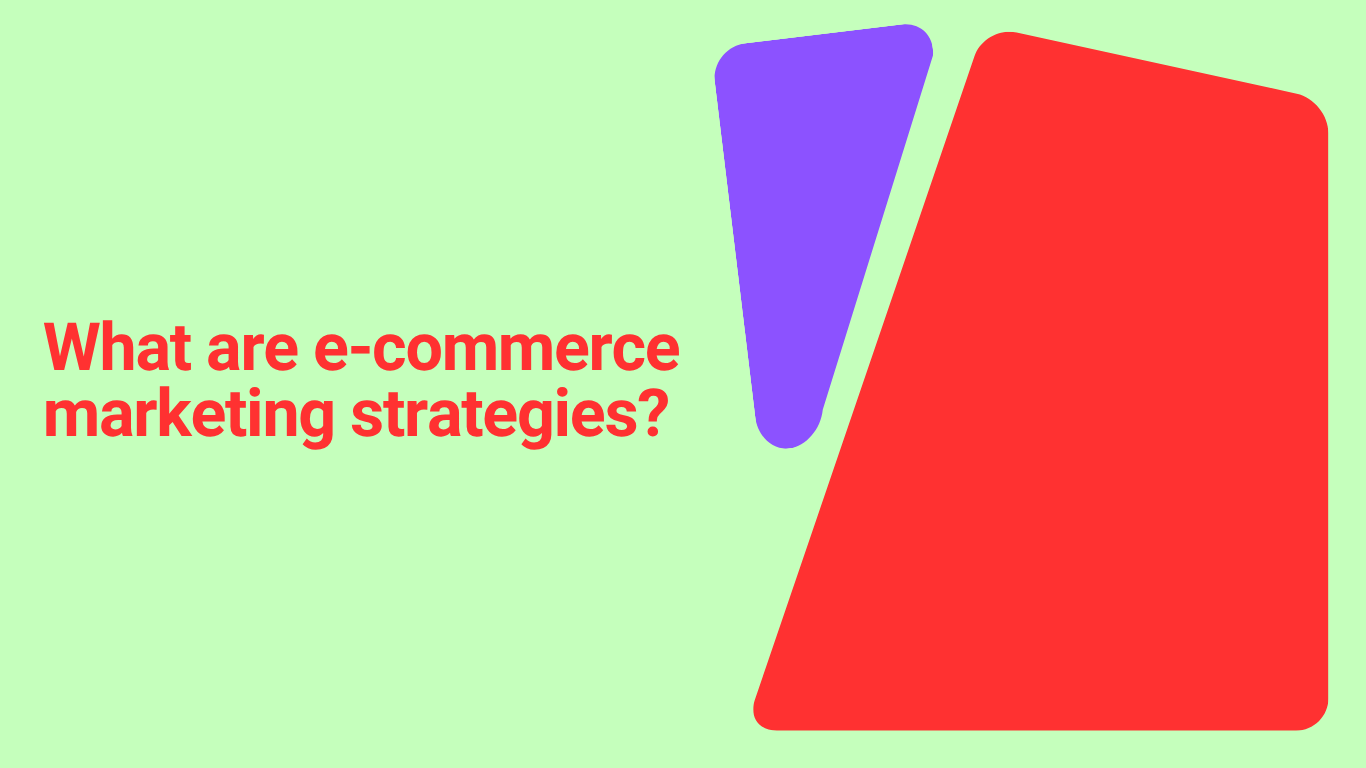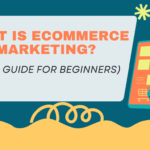
What are e-commerce marketing strategies?
Understanding E-Commerce Marketing
E-commerce marketing refers to the strategies and tactics employed by online businesses to promote their products or services, ultimately driving traffic to their websites and increasing sales. This form of marketing is critical for online business success, as it encompasses a broad range of activities that enhance online visibility and attract potential customers. Unlike traditional marketing, which often relies on physical advertising channels such as print, television, or radio, e-commerce marketing utilizes digital platforms, including social media, search engines, email, and online marketplaces.
Table Of Content
The importance of e-commerce marketing cannot be overstated. Given the rapidly growing number of consumers shopping online, it is essential for businesses to establish a strong online presence. E-commerce marketing helps in building brand awareness and loyalty, reaching wider audiences, and ultimately driving conversions. By employing various digital marketing tactics such as search engine optimization (SEO), pay-per-click (PPC) advertising, social media marketing, and email campaigns, businesses can create a comprehensive strategy tailored to their target demographic.
Key terms associated with e-commerce marketing include conversion rate, which refers to the percentage of visitors who complete a desired action on a website, such as making a purchase. Additionally, customer acquisition cost (CAC) represents the total cost incurred to acquire a new customer, making it crucial for businesses to optimize marketing efforts while minimizing expenses. Consumer behavior, which studies the purchasing decisions of individuals, also plays a significant role in shaping e-commerce marketing strategies.
In summary, understanding the foundations of e-commerce marketing is essential for online businesses looking to thrive in the competitive digital landscape. By differentiating it from traditional marketing, businesses can leverage the vast opportunities that e-commerce offers, thus securing their success in the marketplace.
Defining Your Target Audience
Understanding your target audience is a fundamental step in developing effective e-commerce marketing strategies. This process involves identifying key customer demographics, preferences, and purchasing behaviors that inform how products and services are presented to potential buyers. By delving into market research, businesses can gather valuable insights that shape their strategies and optimize customer engagement.
One effective method for researching your target audience is through demographic analysis. By examining factors such as age, gender, income level, and geographic location, businesses can segment their audiences into meaningful categories. These segments allow for a more tailored marketing approach, ensuring that messages resonate with distinct groups. In addition, understanding psychographics—such as lifestyle choices, values, and interests—can further refine your audience definition. This comprehensive approach allows marketers to align their offerings with consumer expectations.
Creating detailed buyer personas is another crucial step in this process. A buyer persona is a semi-fictional representation of ideal customers based on market research and real data. These personas encapsulate the characteristics, needs, and motivations of specific audience segments, thereby enabling marketers to develop targeted campaigns that speak directly to those groups. For instance, a persona might highlight a tech-savvy millennial interested in sustainable products. Thus, the business can focus on marketing efforts toward eco-friendly features and innovative technology, attracting that particular audience segment.
Moreover, monitoring customer feedback and purchase behavior through analytics tools is essential for ongoing audience understanding. Analyzing data on customer actions, such as click-through rates and conversion metrics, provides insights into what resonates with consumers and what might require adjustments. Capturing this information allows businesses to refine their buyer personas, ensuring they remain relevant in an ever-evolving marketplace. Ultimately, defining your target audience is not a one-time task but an ongoing commitment that drives the success of e-commerce marketing strategies.
Utilizing SEO for E-Commerce
Search Engine Optimization (SEO) is a fundamental component of e-commerce marketing strategies. It enhances the visibility of online stores in search engine results, ultimately driving traffic and increasing sales. An effective SEO strategy begins with thorough keyword research, where merchants identify relevant terms that potential customers are likely to search for. Understanding customer intent behind these keywords is crucial, as it aids in selecting phrases that resonate with the audience.
Once the appropriate keywords are identified, on-page optimization becomes imperative. This involves integrating keywords naturally into various elements of web pages, including titles, headers, product descriptions, and meta tags. Each product page should be tailored to target specific keywords, ensuring that content is both informative and engaging. High-quality product descriptions, optimized images, and user-friendly URLs can significantly enhance overall user experience, which is a factor search engines consider when ranking websites.
Moreover, internal linking is an effective technique that enhances site structure and navigation. By linking related products or categories, e-commerce sites can guide users and improve the likelihood of conversion. It’s equally vital to focus on mobile optimization, given the increasing number of consumers shopping on mobile devices. Responsive design ensures a seamless browsing experience across varied screen sizes, which is essential for retaining potential buyers.
Link-building techniques are also paramount in increasing domain authority and improving search engine rankings. Attaining backlinks from reputable websites can enhance the credibility of an e-commerce site. Engaging in guest blogging, collaborating with influencers, and creating shareable content can promote the online store, driving organic traffic effectively.
In conclusion, leveraging SEO practices for e-commerce can significantly influence the success of online businesses. By focusing on keyword research, on-page optimization, and robust link-building strategies, e-commerce websites can enhance their visibility and attract a larger customer base.
Leveraging Social Media Platforms
In the ever-evolving landscape of e-commerce, social media platforms play a crucial role in facilitating marketing strategies aimed at boosting online businesses. These platforms not only serve as vital channels for engagement and interaction but also offer a space for brands to showcase their products and connect with their audience. To harness the full potential of social media for e-commerce, businesses must develop tailored strategies that resonate with their target market.
One effective approach is to create engaging content that encourages user interaction. High-quality images, videos, and stories that highlight products in use can captivate potential buyers and prompt them to engage. Utilizing platforms like Instagram and Pinterest, which focus heavily on visual content, can significantly increase brand visibility and attract potential customers. Regularly posting engaging content, including behind-the-scenes looks, user-generated content, and promotions, is essential in keeping the audience interested and involved with the brand.
Additionally, paid advertising on social media platforms such as Facebook and Instagram can yield substantial returns. These platforms provide precise targeting options, allowing businesses to reach specific demographics based on interests, behaviors, and location. By experimenting with various ad formats, like carousel ads or video ads, e-commerce marketers can capture the attention of consumers effectively and encourage conversions. Allocating budget for social media advertising can lead to enhanced brand awareness and expanded customer base.
Furthermore, building a community around the brand is a powerful strategy in e-commerce marketing. Brands that foster interactions by responding to comments, hosting Q&A sessions, or sharing customer testimonials can establish a loyal following. This community-driven approach not only enhances customer trust but also encourages word-of-mouth marketing as satisfied customers share their experiences with others. By leveraging social media to create a sense of belonging, e-commerce businesses can build long-term relationships with their audience, ultimately driving sales and growth.
Email Marketing Strategies for E-Commerce
Email marketing has emerged as an indispensable tool for e-commerce businesses seeking to enhance their customer engagement and drive sales. One of the primary advantages of email marketing is its cost-effectiveness, allowing businesses of all sizes to reach their target audience with minimal investment. By implementing strategic email marketing practices, companies can create meaningful connections with customers, foster loyalty, and increase repeat purchases.
Building a robust email list is the foundation of any successful email marketing strategy. E-commerce businesses should consider using lead magnets such as discounts, exclusive content, or free resources to encourage website visitors to subscribe. It is crucial to promote email sign-up options clearly across various platforms, including social media and the website itself, ensuring potential customers are aware of the benefits of joining the list.
Once a substantial email list is established, the next step is to create engaging newsletters that resonate with recipients. Personalized content, such as product recommendations based on previous purchases or browsing behavior, can significantly increase open rates and engagement. Additionally, businesses should leverage automation techniques to streamline communication. Welcome emails, cart abandonment reminders, and post-purchase follow-ups can all be automated, ensuring timely and relevant touchpoints with customers.
Another essential strategy is to implement personalization tactics in email campaigns. Segmenting the email list based on customer preferences, demographic information, or purchasing behavior allows businesses to tailor their messages more effectively. Personalized subject lines and content lead to higher open and conversion rates, as customers feel valued and understood. Moreover, testing and optimizing email campaigns through A/B testing can further refine messaging and improve overall engagement.
Content Marketing and E-Commerce
Content marketing plays a pivotal role in the e-commerce landscape, as it aids in attracting, engaging, and retaining customers. By providing valuable and relevant content, businesses can effectively nurture relationships with potential buyers. Various formats, such as blogs, videos, and infographics, serve unique purposes in the purchasing journey, ultimately guiding consumers towards making informed decisions.
Blogs are an essential component of content marketing for online retailers. They offer the opportunity to address common questions, showcase product benefits, and demonstrate industry expertise. By creating insightful articles that resonate with the target audience, brands can position themselves as thought leaders. Additionally, integrating search engine optimization (SEO) into blog content helps improve visibility, ensuring that potential customers can easily discover the information they seek.
Videos, on the other hand, can effectively showcase products in a dynamic and engaging manner. They allow e-commerce businesses to illustrate how to use products, present customer testimonials, or even offer behind-the-scenes insights into the brand. As video content continues to consume a large portion of online traffic, utilizing platforms such as YouTube can enhance audience reach and establish brand credibility.
Infographics also play a significant role in content marketing, presenting complex information in a visually appealing and easily digestible manner. E-commerce businesses can use infographics to convey product comparisons, consumer statistics, or industry trends, encouraging shares across social media platforms. This not only boosts brand awareness but also contributes to driving traffic back to the e-commerce site.
Incorporating these various content types into a broader content marketing strategy, while aligning with SEO best practices, can significantly enhance a brand’s online presence. Creating a seamless interplay between informative content and e-commerce initiatives ultimately drives conversions and cultivates enduring customer relationships.
Using Paid Advertising for E-Commerce Success
Paid advertising has emerged as an indispensable component of e-commerce marketing strategies. By leveraging platforms such as Google Ads and various social media networks, businesses can significantly enhance their visibility and drive targeted traffic to their online stores. The primary advantage of pay-per-click (PPC) campaigns lies in their ability to reach a specific audience based on demographics, interests, and behaviors, facilitating personalized marketing approaches.
Google Ads allows e-commerce businesses to utilize keyword targeting effectively. By selecting relevant keywords, companies can ensure their ads appear in search results when potential customers are looking for products they offer. Additionally, platforms like Facebook, Instagram, and Pinterest offer robust advertising tools, enabling marketers to craft visually appealing ads and optimize campaigns for maximum engagement. Businesses can create tailored advertisements based on user data, allowing for highly effective targeting and improved conversion rates.
Budgeting for paid advertising is a critical element in crafting a successful campaign. E-commerce businesses must determine their return on investment (ROI) and allocate resources accordingly. Setting a daily or monthly budget helps manage expenses while allowing for adjustments based on campaign performance. Small businesses may start with modest budgets and scale as they analyze results and trends. Keeping an eye on the cost-per-click (CPC) and the overall effectiveness of various ad placements is essential for optimizing expenditure.
Analytics is another vital aspect of paid advertising in e-commerce. By leveraging performance metrics, marketers can assess the success of their campaigns and make informed decisions for future strategies. Monitoring click-through rates (CTR), conversion rates, and customer acquisition costs will provide insights into what aspects of an advertising campaign are working well and which areas require improvement. Overall, a thoughtful approach to paid advertising can greatly influence the success of an e-commerce business, making it an essential area of focus in today’s competitive marketplace.
Enhancing User Experience on Your E-Commerce Site
In the competitive world of e-commerce, enhancing user experience (UX) is essential for attracting and retaining customers. A well-designed e-commerce site not only reflects your brand’s identity but also provides a seamless shopping experience. Key elements such as website design, intuitive navigation, mobile optimization, and efficient checkout processes significantly influence the overall UX, affecting conversion rates and customer satisfaction.
Website design plays a pivotal role in how users perceive a brand. An aesthetically pleasing site with a clean layout, appealing color schemes, and high-quality images engages visitors and builds trust. Additionally, it is important that the design is consistent across all pages to create a unified experience that enhances usability. Ensuring that product images are clear and descriptions are detailed contributes to informing potential buyers, further optimizing the user journey.
Navigation is another critical area that can affect user satisfaction on an e-commerce site. A clear and organized navigation menu allows users to find products quickly and efficiently. Implementing categorization and filters enables customers to narrow down search results based on their preferences. This ease of navigation not only minimizes frustration but also encourages users to explore more products, thus increasing the likelihood of conversion.
In today’s mobile-centric world, mobile optimization is indispensable. A responsive design ensures that the e-commerce site functionally performs well across all devices, particularly smartphones and tablets. Given that a sizable portion of online shopping occurs on mobile devices, creating a user-friendly mobile experience is crucial. This includes ensuring that buttons are adequately sized for touch screens and that loading times are minimized.
Analyzing and Measuring Success
In the realm of e-commerce marketing, the ability to analyze and measure success is crucial for developing effective strategies that drive growth and profitability. Utilizing data analytics tools enables online businesses to track performance metrics that inform marketing decisions and optimize campaigns. Among the plethora of tools available, Google Analytics stands out as a powerful platform for monitoring website traffic, user behavior, and conversion rates. By leveraging Google Analytics, e-commerce merchants can gain valuable insights into customer interactions, facilitating a deeper understanding of which marketing efforts resonate most with their target audience.
Key Performance Indicators (KPIs) play an essential role in evaluating the success of e-commerce marketing initiatives. These metrics provide a quantifiable measure of performance against established objectives. Important KPIs for e-commerce include conversion rate, average order value, customer acquisition cost, and cart abandonment rate. Each of these indicators offers nuanced insights that help identify strengths and weaknesses in marketing strategies. For instance, a high cart abandonment rate may signal a need for improved user experience or follow-up strategies to recapture potential sales.
Additionally, data analysis goes beyond just collecting metrics; it also involves interpreting and acting upon the information gathered. Businesses should establish a systematic approach to reviewing performance data regularly, allowing for timely adjustments to marketing tactics. Implementing A/B testing can also provide perspectives on how minor changes in marketing or design elements can impact consumer response. Adopting a data-driven mindset enables e-commerce marketers to continually refine their strategies, align them with customer preferences, and ultimately increase overall ROI.
In summary, the integration of robust analytical tools and clear metrics is integral to assessing the effectiveness of e-commerce marketing strategies. By analyzing this data, businesses can make informed, strategic decisions that lead to more impactful marketing efforts and, ultimately, improve their online success.





